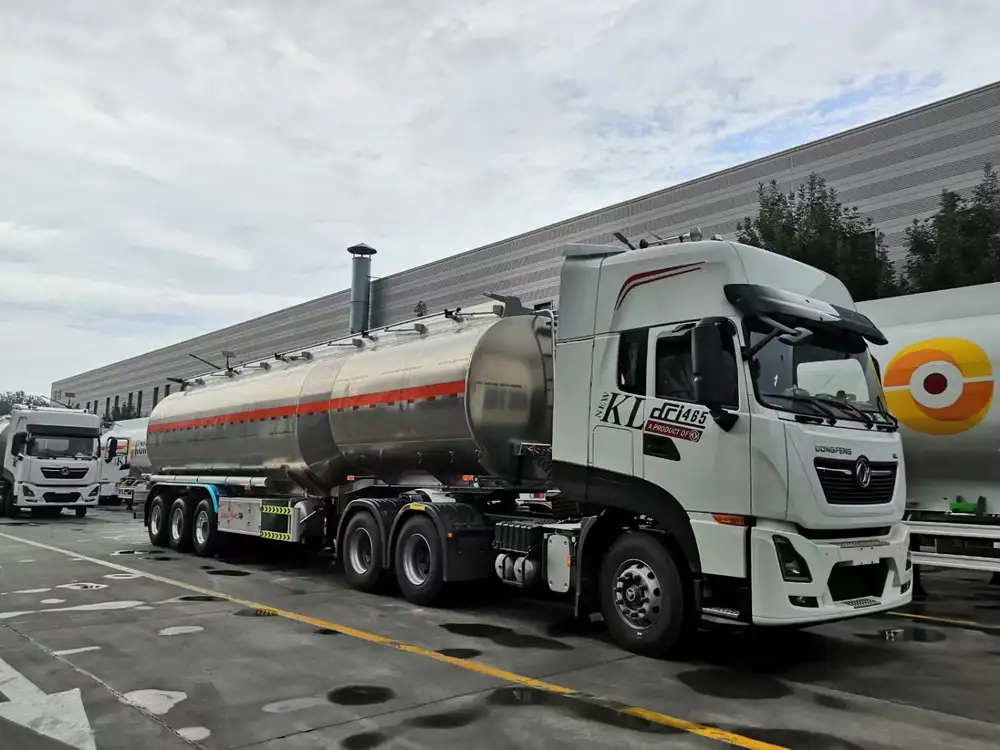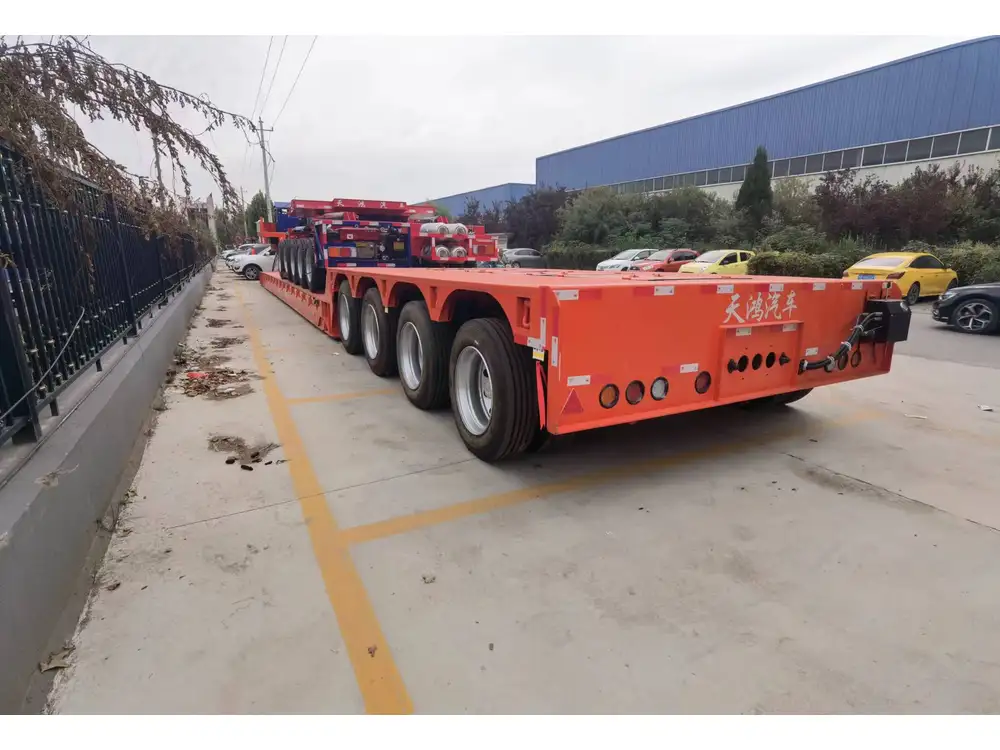When considering the logistics and operation of fuel trucks, understanding their fuel capacity is crucial for efficiency, cost management, and environmental responsibility. In the transportation and logistics sectors, efficiency often dictates profitability. Therefore, an accurate knowledge of how many gallons in a fuel truck directly influences operational planning, budgeting, and compliance with industry regulations.
Types of Fuel Trucks and Their Capacities
1. Standard Fuel Trucks
Standard fuel trucks typically have a fuel capacity ranging from 3,000 to 10,000 gallons. These vehicles are predominantly used for delivering fuel to gas stations or industrial customers. The exact capacity varies based on the truck’s design, the intended use, and the regulatory requirements of the regions they operate in.
| Truck Type | Typical Capacity (Gallons) | Usage |
|---|---|---|
| Light-Duty Fuel Trucks | 1,000 – 3,000 | Small deliveries |
| Medium-Duty Fuel Trucks | 3,000 – 5,000 | Gas stations, commercial delivery |
| Heavy-Duty Fuel Trucks | 6,000 – 10,000 | Bulk delivery, industrial operations |

2. Tanker Fuel Trucks
Tanker trucks, designed primarily for transporting liquid commodities, specifically fuel, can carry larger volumes. Their capacities can extend up to 11,600 gallons, depending on the number of compartments and the configuration.
| Tanker Type | Maximum Capacity (Gallons) | Features |
|---|---|---|
| Single Compartment Tanker | Up to 11,600 | Holds a single type of fuel |
| Multi-Compartment Tanker | Up to 10,000 | Allows for transporting different fuel types |
| Vacuum Tanker | Varies (commonly 3,000 – 7,000) | Used for suction and transfer of liquid fuel |
Factors Influencing Fuel Truck Capacity
Design and Regulations
The maximum fuel capacity of a truck is profoundly influenced by its design. Regulatory constraints, particularly in the U.S. and Europe, dictate the construction and operational standards for transport vehicles to ensure safety. Each state (or country) has limits on how much fuel can be legally transported in one vehicle based on road conditions, safety standards, and environmental regulations.

Cargo Layout and Tank Configuration
The cargo layout within the tank significantly impacts the operational flexibility of these trucks. For instance:
- Single-compartment tankers are suited for delivering one type of fuel, maximizing volume but lacking flexibility.
- Multi-compartment tankers can carry a variety of fuels (e.g., diesel, gasoline) but may have a lesser overall capacity than a single-compartment design due to the need for dividing walls.
Weight Considerations
Weight restrictions imposed on roads also play a crucial role in determining fuel truck capacity. The truck’s gross vehicle weight rating (GVWR) limits the maximum fuel it can carry safely.
Local Market Demand
In some cases, specific markets may require specialized trucks. Fuel trucks for remote areas or emergency services may have customized capacities tailored to their operational requirements, emphasizing increased mobility and rapid response.

Fuel Truck Efficiency: Calculation and Optimization
Fuel Composition and Density
To optimize fuel operations, understanding fuel composition is necessary. The density of the fuel can affect how much fuel can be effectively transported. For example, diesel typically has a density of about 7.1 pounds per gallon, while gasoline is approximately 6.1 pounds per gallon. This variance means that two trucks carrying the same volume might have significantly different weights, impacting performance on the road.
Load Calculation
Utilizing the Gallons to Weight Conversion chart can be instrumental in planning for transport. For example, if a fuel truck has a capacity of 5,000 gallons, its maximum weight can be estimated as follows:
- Diesel: 5,000 gallons × 7.1 lbs/gallon = 35,500 lbs
- Gasoline: 5,000 gallons × 6.1 lbs/gallon = 30,500 lbs

Distance and Fuel Requirements
Fuel efficiency is also influenced by the distance traveled and the load carried. Knowing the gallons in a fuel truck helps to calculate fuel needs more accurately. For instance, if a truck averages 6 miles per gallon and aims to travel 300 miles, operators can quickly ascertain:
- Required gallons: 300 miles ÷ 6 miles/gallon = 50 gallons
However, planners should add safety margins for unforeseen circumstances such as traffic, detours, or adverse weather conditions.
Best Practices for Fuel Truck Operations
Regular Maintenance and Safety Checks
To optimize a truck’s performance, regular maintenance is essential. Routine checks of fuel systems, line integrity, and tank condition can prevent leakage and ensure safe operations. Implementing a systematic maintenance schedule can save costs associated with emergency repairs and thus impact the overall profitability of hauling contracts.

Technological Integration
Modern telemetry systems can help track fuel levels and optimize routes based on real-time data. By leveraging software to analyze patterns in fuel consumption and operational efficiency, companies can significantly improve their logistics strategies.
Effective Training Programs
Employee training programs focusing on safety, defensive driving, and emergency response procedures are paramount. Trained drivers can reduce accidents, maintain compliance with regulations, and ultimately contribute to more efficient operations.
Understanding Market Trends in Fuel Truck Utilization

Current Industry Insights
The fuel transportation industry has seen significant changes, demanding adaptability and forward-thinking strategies. The shift towards eco-friendly transport solutions has led companies to explore alternative fuels and electric vehicles for logistics.
Sustainability Focus
The modern fleet management approach emphasizes compliance with environmental standards. As regulators push for reduced emissions and increased accountability concerning fuel management, companies must adapt their operations accordingly to maintain a competitive edge.
Evolving Customer Demands
Customer preferences are evolving, with a growing emphasis on speed and reliability. Users expect prompt and precise deliveries driven by real-time tracking capabilities. Fuel providers that can assure transparency and prompt communication stand a better chance of gaining and retaining clients.

Conclusion: The Vital Role of Knowing Fuel Truck Capacities
Understanding how many gallons are in a fuel truck isn’t merely an academic exercise; it’s pivotal for strategic decision-making across various dimensions of the fuel transport sector—from operational management to environmental responsibility.
Armed with the knowledge of fuel capacities, type specifications, and best practices in maintenance and technology use, logistics managers can streamline operations. This insight enables companies to allocate resources more effectively while addressing both current and future demands of the marketplace.
For organizations aiming to optimize their logistics operations, investing in technology and maintenance, along with adopting best practices for staff training and safety, will pave the way for improved fuel management strategies and sustainable business growth.
By nurturing a deeper understanding of fuel capacities and industry trends, firms can ensure they remain competitive in a rapidly evolving landscape. This structured knowledge reinforces logistical efficiencies, enabling businesses to maintain profitability while fulfilling client needs in a timely and responsible manner.



